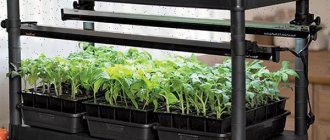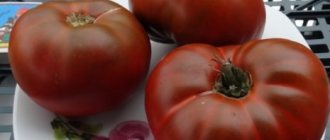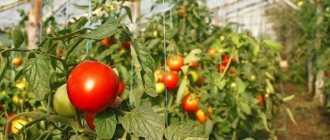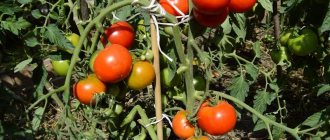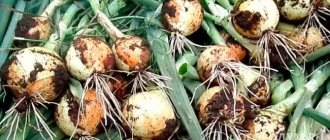Vegetable growing » Cabbage
0
1184
Article rating
Kira Stoletova
The variety of cabbage varieties allows you to choose seeds, taking into account growing conditions and taste characteristics. Among the early ripening hybrids, Parel cabbage stands out.
Characteristics of cabbage variety Parel f1
Planting a variety
When growing a crop, it is important to choose a well-lit, sunny, open place. Otherwise, with a lack of light, the forks will grow small and loose, and the yield will be low.
The presence of fertile soil plays an important role. The vegetable does not grow well in acidic soils; neutral soil, loamy soils that contain humus and easily retain moisture are most suitable.
Compliance with crop rotation gives a positive result. The best predecessors for cabbage are legumes, onions, cucumbers, potatoes and root vegetables. It is undesirable to plant a vegetable in a place where tomatoes, radishes, and turnips previously grew. Plants are planted in two ways: seedlings and sowing seeds in open ground.
Growing seedlings
For this variety, it is advisable to choose the seedling method of cultivating the crop, especially if early sowing is carried out for summer ripening. Seeds are sown in the first half of April. In pre-prepared containers with a nutritious soil mixture (a mixture of earth, peat or humus), the seeds are buried 1.5–2 cm, moistened the soil, covered with glass or transparent film material. After approximately 5–7 days, the first shoots will appear and the cover must be removed immediately. If this is not done in time, the sprouts will stretch out and the seedlings will be weak.
Young plants are kept at temperatures: +14...+18°C during the day, +8...+10°C at night. Provide regular irrigation. Seedlings dive when they form 2 true leaves with a distance between seedlings of 6–7 cm. 10–15 days before planting seedlings in open ground, they are hardened. At first, the stay of plants in the fresh air is limited to 30 minutes, and then, gradually increasing every day, up to 5-6 hours.
They are planted in open, already well-warmed soil in the second half of May, when the plants have 5–7 leaves and the plant height has reached 15–20 cm. The ambient temperature must be consistently stable: from +12°C. The Gloria variety satisfactorily tolerates changes in day and night fluctuations from +20°С to -6°С, but still the optimal temperature is the range of +10…+20°С.
Learn how to plant and grow cabbage correctly.
The prepared holes are watered with water (about 1 liter of liquid), fertilizers are added from a mixture of peat, sand, ash and compost, the plants are placed and covered with soil up to the first lower leaves, slightly compacting the soil. It is necessary to adhere to the planting scheme: the distance between plants should be at least 50 cm, and the row spacing should be 0.6 m. For the first 3-4 days after planting, cabbage needs shading to improve the rapid rooting of the plant.
In case of probability of night frosts, the plantings are covered with film or agrofibre.
Seedless method
You can also use the method of growing a crop by sowing seeds in open ground, which is successfully used even in northern habitats. The huge advantage of this option is the possibility of obtaining strong, healthy plants, since they do not get sick from transplantation (cabbage does not tolerate it well). When warm weather sets in with a temperature of +13°C and above, the seeds are sown in furrows to a depth of 2 cm with a distance between rows of 60–70 cm. You can make planting holes and plant 5-6 seeds in them, sprinkled with a layer of soil 2- 3 cm. Activities are carried out at the end of April or at the beginning of May, depending on the climatic conditions of the growing region. To speed up the emergence of seedlings, it is advisable to cover the cabbage bed with agrofibre. The appearance of the first shoots is a signal that the shelter needs to be removed. The planting growth pattern is 0.5×0.6 m.
When young plants reach a height of 10–15 cm, they must be thinned out, leaving the strongest seedlings.
Agrotechnics of cultivation and care
It is allowed to grow this white cabbage in open or closed ground. In this case, you can use the seedling or non-seedling method.
To obtain earlier production, Parel cabbage seeds are sown in a greenhouse or greenhouse in March. If sowing is done in separate containers of 2-3 pieces (for example, peat pots), you can do without picking the seedlings. When transplanting into open ground, the strongest plant is selected and the rest are removed.
Growing seedlings in greenhouse conditions:
- prepare the soil by disinfecting it from insects and harmful microorganisms by spilling a solution of manganese;
- sowing is done in moist soil; for seed germination, high humidity is needed;
- additional watering is carried out with warm, settled water with potassium permanganate (light pink);
- at the age of 10-15 days, it is recommended to pick up the seedlings (plant less often);
- fertilizing is done with nitrogen fertilizers, possibly with the ash of deciduous trees, 1-2 times during the growing season;
- lighting must be provided that is close in brightness and duration to natural light;
- Parel cabbage seedlings are hardened by ventilating the greenhouse during the day (a distinctive feature is the blue-lilac color of the stem);
- seedlings are ready for planting in an open area at the age of 3-4 weeks when 3-4 true leaves are formed;
- 4-5 plants are planted per square meter.
The growing season from planting cabbage seedlings into the ground is 50-60 days.
Soil preparation begins in autumn:
- in the dug up area, fertilizers are applied and planting ridges (small elevations) are formed;
- It is recommended to insulate the area with a layer of mulch and cover it with black agro-film;
- when warm weather sets in, the film is removed, and seeds are sown into the thawed soil in separate holes (4-5 seeds per 1 m2);
- When shoots appear, the ground must be periodically loosened to remove weeds.
Care in the open ground consists of the following activities:
- loosening the soil, timely removal of weeds;
- feeding plants with nitrogen-phosphorus substances, which ensure stable growth and development of cabbage;
- freeing leaves from insects, their eggs and larvae;
- prevention of fungal and bacterial diseases;
- regular watering, which I increase during the formation of heads of cabbage.
If the necessary conditions for growing early Parel cabbage are met, fruiting is characterized by a high, stable yield.
Planting care
The variety of cabbage under consideration is undemanding for cultivation, but is very responsive to attention and care towards it
Watering and fertilizing
The planted seedlings are watered daily for a week, then watering is reduced to once every 4-5 days. During the dry season, irrigation is carried out every 2-3 days. It is advisable that the water be settled, not cold and not fall on the leaves, but only under the root of the plant.
To better retain moisture in the ground, it is recommended to mulch with peat.
The variety does not require mineral fertilizing, but responds well to the use of organic fertilizers. Without adding organic matter, you can hardly count on getting a high yield. If sowing seeds or planting seedlings was carried out in fertilized soil, then the first feeding can be abandoned.
When planting in “poor” soil, the first fertilizing is done - spraying with ammonium nitrate (10 g of substance per 10 liters of water). After two weeks, a second, nitrogen-containing fertilizer is added: a solution of chicken manure (0.5 kg of substance per 10 liters of water). This will help the plant to better grow green mass. The third and final feeding is carried out after 14 days, during the period of head formation. Prepare a mixture of water (10 l), ammonium nitrate (20 g) and superphosphate (30 g). The liquid is poured under the root of the plant.
Important! Excess water negatively affects the quality of the forks: due to wateriness, the head of cabbage may crack and storage of the product may deteriorate.
Weed removal and hilling
The area where the crop grows must be kept clean, without weeds growing on it. Various types of weeds have a depressing effect on the plant, especially young ones: the development of the crop is delayed, susceptibility to diseases increases and, as a result, a decrease in yield
Therefore, timely removal of weeds and weeding of beds is so important. After regular watering, the ground near the cabbage stalk becomes crusty, which prevents normal access of oxygen to the root system of the vegetable.
Systematic hilling will help the plant to fully obtain nutrients and moisture, reduce the likelihood of the spread of fungal and viral infections, and also increase resistance to adverse natural phenomena.
You will be interested to know how to process cabbage: timing, methods of pest control. Hilling should be done once every two weeks, shallowly, carefully to avoid damage to the roots, adding soil to the base of the plant trunk
Disease and pest control
The crop is highly resistant to fusarium, but is susceptible, like many other types of cabbage, to other common diseases: gray rot, powdery mildew, clubroot.
Gray rot
For the purpose of prevention, resort to the following measures:
- do not allow the soil to become waterlogged;
- remove diseased plants and weeds from the garden in a timely manner;
- disinfect premises prepared for storing crops.
Powdery mildew is the appearance of a white coating on the leaves, which is formed as a result of a fungal infection. At the first signs of this disease, use the biofungicide “Fitosporin-M” according to the instructions (once every 14–20 days) until the crop is completely cured.
Clubroot is a fungal disease that attacks the root of a plant. In the process of fighting the disease, preventive measures are used:
- removal of infected seedlings along with a clod of earth (to prevent infection of neighboring crops);
- compliance with crop rotation;
- treating the soil with lime before planting cabbage plants in the ground (1 kg of substance per 4 m²).
The culture of this species also suffers from pests: aphids, caterpillars, cutworms. They can be scared away by planting plants with a spicy specific aroma in the cabbage row: marigolds, mint, sage, nasturtium. Among the folk remedies to combat parasites, it is recommended to use the following infusion:
- Tomato tops and onion peels, with the addition of soap (a quarter of a bucket of the above residues, add water at a temperature of about 90°C, leave for 24 hours);
- Chopped nettle (pour 1/3 of a bucket of the plant with hot water for 2 days).
Important! To prevent cabbage diseases, it is necessary to disinfect garden tools and planting material.
Transplanting seedlings into the ground
For planting, choose strong and healthy plants that have already formed at least five leaves; long roots are shortened. Such seedlings take root better and do not lose moisture.
Cabbage should not be planted in last year's place, or after beets, tomatoes, radishes and turnips. The approximate time for transplanting into the soil of early “Parel” is mid-April or early May. The procedure is carried out in the morning or in cloudy weather. The seedlings are buried down to the third cotyledon leaf and the soil is compacted well so that there are no voids in the root area. Be sure to irrigate and sprinkle with dry soil.
After planting, the row spacing must be loosened. Parel cabbage should be planted in rows spaced about 30cm apart.
Agrotechnical rules for caring for vegetables are as follows:
- watering;
- feeding with fertilizers;
- weeding and loosening the soil;
- prevention of fungal and bacterial diseases;
- protection from pests.
The frequency of watering depends on weather conditions in each specific case, but usually at least once a week. It is necessary to water the vegetable with settled warm water. After each watering or rain, the soil should be loosened to improve the oxygen supply to the cabbage root system. Loosening is usually combined with weeding.
- bird droppings diluted in water (in a ratio of 1:15);
- ammonium nitrate;
- nettle infusion.
After the formation of the ovary, cabbage has a greater need for phosphorus and potassium, which is supplied to the soil by adding superphosphate and potassium sulfate. To protect the plant from attack by pests, it is useful to dust it with tobacco dust or wood ash.
What should you protect from the Parel variety?
The F1 hybrid is quite resistant to diseases and pests, but it is still worth monitoring its condition. Depending on the development phase, cabbage can be attacked by:
- In the first phase: cabbage leaf beetles, cruciferous flea beetles, cabbage flies and moths.
- In the second phase - cabbage whites.
- In the third phase - cabbage aphids and cutworms.
Main diseases that can affect Parel:
- blackleg is a fungus that causes stems to rot
- clubroot - characterized by the appearance of growths and swellings on cabbage
- pernosporosis - spots and plaque appear on plants
To prevent these diseases, it is recommended to sterilize the seeds at a temperature not exceeding 80 degrees. Decoctions and infusions of tomato tops, wormwood, yarrow, garlic and dandelion are used against harmful insects. If the lesions are extensive, then they resort to systemic insecticides, provided that the harvest will take place no earlier than two weeks later.
It doesn't take much effort to get a bountiful harvest of beautiful and tasty Parel heads.
The process of growing a hybrid is quite simple - the main thing is to do everything in a timely manner and pay special attention to the seedlings, since this is the key to the health of an adult plant. The culture itself is unpretentious in care, rarely gets sick and is attacked by pests
In response to simple and fairly common actions, farmers receive vitamin-rich vegetables in a short time.
More information can be found in the video:
Harvesting and storage rules
Harvesting is carried out as the crop matures. The collection period begins in mid-June and lasts until autumn - it all depends on the time of planting. It is necessary to ensure that the vegetable does not stand on the root and does not crack. Readiness for harvesting is determined by the dense consistency of the head and the characteristic shine of the foliage. They are harvested selectively or one-time, cutting off the heads of cabbage at the very surface of the soil.
Cabbage harvest
Growing Parel does not create difficulties if everything is done in a timely manner and the development of the seedlings is carefully monitored. The crop does not require special care, rarely gets sick, and is not subject to pest attacks very often.
Characteristics of cabbage variety Parel f1
The variety of cabbage varieties allows you to choose seeds, taking into account growing conditions and taste characteristics. Among the early ripening hybrids, Parel cabbage stands out.
Characteristics of cabbage variety Parel f1
Characteristics of the variety
Over a period of cultivation of more than 20 years, it has shown itself to be a record holder for the rapid formation of a commercial harvest.
Description of Parel variety:
- ultra-early ripening;
- high resistance to frost;
- high resistance to cracking;
- high productivity;
- excellent taste;
- universal purpose.
Parel is suitable for both commercial production and cultivation in a summer cottage. From the moment the seedlings are planted in the garden until the harvest, an average of 55-60 days pass.
Productivity varies depending on growing conditions. It ranges from 150 c/ha to 450 c/ha. Summer residents note that thickened planting does not affect the quantity and quality of the harvest.
Description of the head of cabbage
White cabbage Parel f1 forms small round heads weighing from 800 g to 1.5 kg. The rosette of leaves is raised. The leaves are light green in color and have smooth edges. There is a small waxy coating on the surface, which can be easily removed when touched by hand.
In a state of biological maturity, they are well stored in garden beds without loss of taste and marketability for up to 2 weeks. Ripening occurs evenly. This is convenient for farms that sell early varieties of cabbage.
Application of the vegetable
Parel is often used in stews, in baby food and in dieting. When cooked, the sheets quickly become ready and are well crushed in a blender into puree.
Growing
To get a rich harvest, follow some growing rules:
- Seeds for seedlings are sown at the end of March at home and at the beginning of May in an open garden bed. When grown through seedlings in open ground, the bushes are planted at the age of 4 weeks. This is the period of late April-early May. In regions with cold summers, these dates are shifted by 1-2 weeks.
- Early varieties are grown in greenhouses for harvest in late May and early summer. The technology is the same as when growing in an open garden. Seeds are sown for seedlings in early March, then they are planted in the phase of 4 true leaves and planted in a permanent place.
Care for your plants properly
The description of Parel cabbage shows that this plant is not demanding in terms of care and growing conditions, but general recommendations should be followed. These include:
- watering;
- loosening the soil and removing weeds;
- feeding;
- treatments against diseases and pests.
Watering
Cabbage likes to grow in well-moistened soils. If the region is characterized by long periods of drought, watering is carried out 2-3 times a week (if possible, every day). Watering is done in the evening with settled water at the root. In other cases, it is enough to water the bushes once a week or as needed.
Loosening
Loosening the soil is carried out infrequently so as not to damage the leaf rosette. In the first months, the row spacing is loosened once every 2 weeks. When the rosette grows and the head begins to form, the weeds are removed by hand. Since cabbage has a wide rosette, weeds grow poorly.
Top dressing
Nitrogen fertilizing is applied sparingly so as not to interrupt the head setting phase. In total, 1-2 nitrogen fertilizing is sufficient per season. The exception is when the leaves lose color and become pale: this is a signal of nitrogen deficiency. Then another additional feeding is carried out.
Diseases
The vegetable, due to its F1 category hybridity, is resistant to diseases and pests, but if not properly cared for, there is a risk of damage to the plant. The following changes in the plant are cause for concern:
- If the stem gets wet or rots, root rot develops.
- If growths or swellings appear on the leaves, this is a keel.
- Peronosporosis is characterized by spots and a strong coating on the leaves.
To destroy the infection, the planting is treated with fungicides. If root rot occurs, stop watering for a while. If the plant grows in a greenhouse, ventilate more often and reduce humidity.
Pests
When fighting insects and pests, they focus on the seasonality of their reproduction.
Conventionally, there are 3 phases when cabbage is susceptible to pests:
- When growing seedlings, leaves are eaten by leaf beetles, cruciferous flea beetles and cabbage flies.
- During the formation of the ovary, cabbage whites are activated.
- Ripe heads of cabbage are eaten by cutworms and cabbage aphids.
When the first insects appear, you can use folk decoctions: ash or tobacco solution. If traditional methods do not help, they switch to chemicals (insecticides).
https://youtube.com/watch?v=kifRuv-GqyE
Gribovskaya 147
Cabbage Gribovskaya 147 was bred in 1940 by Soviet scientists. It is based on German hybrids. As a result, the result was a hybrid adapted to any climatic conditions. Gribovskaya cabbage 147 can be grown almost everywhere in Russia, except for the northernmost regions. Description of the hybrid
An early ripening cabbage hybrid that ripens within 100 days from germination. And if you measure from the time of planting the seedlings in a permanent place, then it turns out 60 days (+ age of the seedlings 35 days).
The leaf rosette is compact, with whole light green leaves covered with a waxy coating. The diameter of the outlet can be up to 60 cm.
Heads of cabbage are round in shape and weigh up to 3 kg. Their color is light green. When cut, you can see white pulp with a pleasant taste.
Pros of cabbage
- Resistance to adverse weather conditions. Cabbage tolerates high humidity and drought particularly well.
- Good taste. Here, sugar contains 5%, dry matter 8%, a lot of vitamins, especially vitamin C and carotene.
- High yield. From 1 sq. m area, up to 7 kg of products are removed.
- Versatility in use. It is eaten both fresh and stewed. Also, cabbage soup, borscht, cabbage rolls and stews are prepared from cabbage.
- Simultaneous maturation. Such early varieties of cabbage as Gribovskaya 147 ripen together. Useful for farms.
- Precocity.
- Excellent presentation. The heads of cabbage are of medium density, and they are leveled.
- Transportability.
Cons of cabbage
Weak resistance to vascular bacteriosis and clubroot.
Rules for growing cabbage
When growing cabbage, first of all it is necessary to provide proper care for the seedlings. The further development of culture will depend on its quality. Experienced experts advise observing the following conditions:
It is advisable to plant seeds not in ordinary soil, but in a special substrate
You can buy it in a store or make it yourself. It is important to comply with sowing dates. Early ripening varieties are planted around mid-March. The container with seedlings should be placed in a place with good lighting
Otherwise, the seedlings may stretch out. The plant must be provided with lighting for at least 12 hours. Before the planned diving of seedlings into exhaust gas, it is advisable to harden them.
Growing cabbage seedlings
In order to enjoy cabbage to your heart's content and prepare it for the winter, you need to pay special attention to growing seedlings. After all, it is this that is considered the basis for the formation of heads of cabbage.
Growing good vegetable seedlings is not so labor-intensive; you just need to adhere to generally accepted measures that all summer residents and gardeners regularly use:
It is necessary to prepare the soil before or before planting.
For this, it is allowed to use peat, turf soil and various fertilizers. It is not at all important to use only a certain type of soil mixture, the main thing is that the resulting soil is fertile and allows air to pass through. Please note! Under no circumstances should you use garden soil on which cruciferous plants grew for planting seedlings. Since it contains pests and can cause the death of germinated shoots
When growing seedlings of early cabbage, which will subsequently be planted in open ground, it is necessary to take into account the time of year. It is believed that the optimal time for planting this variety is the period from March 1 to March 28. You can also calculate planting based on the total number of days required for seedlings to germinate and plant them outside. As a rule, this takes 60-65 days. Therefore, during this period of time you should begin to plant seeds for seedlings. It is advisable to carry out pre-sowing preparation of cabbage seeds. To do this, you can boil them in water and then immerse them in cold water for 5 minutes. This way they will become more accustomed to temperature changes and develop immunity to many diseases. Fact! Not all early cabbage seeds can be used for pre-treatment
To do this, it is important to carefully read the description of the vegetable variety and familiarize yourself with the methods of industrial processing. It would seem that there is nothing easier than purchasing seeds and planting them
But this is not at all true, in order for future seedlings to be healthy and strong, the boiling method must be followed. You need to water the sprouts as the soil dries out to prevent diseases. Abundant watering is carried out only before planting seedlings in open ground. This will better separate the plants from the pot and enrich the cabbage with moisture. It is during this period that the vegetable needs more liquid by about 50% of its own weight
It would seem that there is nothing easier than purchasing seeds and planting them. But this is not at all true, in order for future seedlings to be healthy and strong, the boiling method must be followed. You need to water the sprouts as the soil dries out to prevent diseases. Abundant watering is carried out only before planting seedlings in open ground. This will better separate the plants from the pot and enrich the cabbage with moisture. It is during this period that the vegetable needs more liquid, approximately 50% of its own weight.
Growing the variety
To obtain early production, the June cabbage variety is planted in seedlings. In central Russia and the Moscow region, early varieties are sown from late February to late March. In the Urals and Siberia, they are sown for seedlings no earlier than mid-April. Residents of the southern regions can sow them from mid-February.
Preparation of planting material
Your own seed or purchased by weight should be calibrated in a 3% saline solution. Hollow seeds will float, and normal ones will sink down. Then they should be kept for disinfection for 30 minutes in a weak solution of potassium permanganate. After this, the seeds are washed well and dried on a napkin.
Seeds can be stratified to improve their germination and resistance to cold. To do this, the seed material, wrapped in a damp cloth, is kept in the refrigerator for one day.
If you purchased seeds in a bag, you should read the information about their processing or lack thereof.
Did you know? Humanity has been growing cabbage since the Stone Age. This crop was cultivated in Ancient Egypt. The ancient Greeks and Romans counted up to 10 varieties of it.
Even before processing the seeds, you should stock up on containers for seedlings. These can be boxes, peat tablets, individual pots (peat or plastic), cassettes. You can buy soil for seedlings in a store or make it yourself. For example, mix 3 parts peat, 1 part turf soil and add a little sand. The homemade mixture must be disinfected (calcined in the oven or poured with potassium permanganate). In any case, it should be loose, nutritious soil with neutral acidity.
Growing seedlings
First, the soil is watered before sowing the seeds. Plant 2 cabbage seeds in separate containers. If picking is planned and a seedling box is used, then grooves 1 cm deep are made in it at a distance of 3 cm from each other. Then the seeds are distributed over them, leaving a gap of 1-2 cm between them.
Video: Planting June cabbage seeds for seedlings
The containers are covered on top and placed in a warm place (+18…+20°C). At this temperature, cabbage sprouts will appear in about 5 days. When they appear, the seedling containers are transferred to the most illuminated place with a temperature of +10...+12°C. After a week, the temperature is increased to +15…+17°C. Daylight hours should be between 12–15 hours. The seedlings are watered regularly, but without waterlogging. The picking is done 2 weeks after emergence, if it was planned.
Three feedings are done:
- a few days after the pick;
- 2 weeks after the first feeding;
- a couple of days before planting in the beds.
Did you know? Cabbage contains only 24 kcal per 100 g and is recommended in diets for weight loss, and cabbage juice also reduces blood sugar levels.
For fertilizing, dilute ready-made complex fertilizer or make the mixture yourself. For the first feeding, 4 g of superphosphate, 2 g of ammonium nitrate and 1 g of potassium salt are dissolved in 1 liter of water. For subsequent feeding, the concentration of these fertilizers is doubled. During the third feeding, the dose of potassium fertilizer is adjusted to 7-8 g, since this element promotes the survival of seedlings.
2 weeks before planting, cabbage seedlings begin to be taken out onto the balcony for hardening. First, they keep it there for a couple of hours during the day, and then gradually increase the time the cabbage spends in the fresh air to constant.
Technology of planting seedlings in open ground
First of all, you should take care of the landing site in advance. It should be smooth and well lit by the sun.
Cabbage loves fertile loamy soils with a neutral or slightly acidic reaction. You should not plant this plant crop where cabbage and root vegetables grew. Good predecessors are grains, onions, legumes, cucumbers, and zucchini.
Important! The acceptable acidity for white cabbage is 6.3–7.8 pH. Soils that are too acidic are limed. At the time of planting, seedlings should be 30–45 days old from emergence and have 3–5 true leaves.
The air should warm up to +15°C. Planting usually occurs at the end of April or beginning of May. The plant is not placed deep into the prepared holes, up to the growth point.
At the time of planting, seedlings should be 30–45 days old from emergence and have 3–5 true leaves. The air should warm up to +15°C. Planting usually occurs at the end of April or beginning of May. The plant is not placed deep into the prepared holes, up to the growth point.
Advantages and disadvantages of the variety
Ideal varieties of cabbage, as we know, simply do not exist. Therefore, the Parel F1 also has its disadvantages. But to a greater extent they are easily offset by a number of advantages, in particular:
- Cabbage ripens very quickly.
- Due to the high density of the head, it is easily transported, which is a definite advantage for commercial cultivation.
- The variety is high-yielding. From 1 m2 you can collect up to 4.5 kg.
- The hybrid is characterized by uniform yield formation.
- Cabbage has excellent taste.
- The heads of cabbage do not crack even 2 weeks after ripening.
- Thanks to its high vitamin C content, Parel F1 is simply ideal for preparing dishes for children.
However, it is worth noting its shortcomings. These include:
- Since this is an early ripening variety and it is very “soft”, it is not suitable for pickling.
- Despite the high yields, they are still lower than those of similar competitive varieties.
- The average weight of a head of cabbage is 0.8-1 kg, which is a rather small indicator.
- Parel F1 has a very short shelf life.
How to grow the Parel variety correctly
To grow a cabbage crop you don’t need to put in a lot of effort, but some rules are still worth knowing and following. Cabbage is planted in two ways: seedlings and non-seedlings. To obtain high-quality vegetables, the main thing is to properly care for the seedlings and control their growth.
The soil for cabbage is prepared in advance. In the fall, before the onset of cold weather, the soil is dug up and, if necessary, fertilizers are applied.
Parel cabbage should be sown no later than mid-March. Before planting, the seeds are germinated. To do this, they are placed in a damp cloth and left in a warm place. In a few days, high-quality seeds will germinate.
In order to prepare the soil for seedlings, you need to take turf soil, peat and sand in equal parts.
It is recommended to water the substrate with manganese solution. Landing grooves are made on the surface of the earth at intervals of three centimeters and a depth of one centimeter. Seed material is placed in them, sprinkled with soil and watered.
For successful growth, plants need to provide:
- Good lighting.
- The daytime temperature is 20-22 degrees, which is reduced by half at night.
- Regular ventilation of the room, preventing the air from cooling.
- Water the plants with manganese solution once every seven days.
15 days after the sprouts appear, it is recommended to transplant the seedlings into separate containers
In this case, you need to pay attention to the appearance of cabbage in order to decide on the choice of fertilizers. If the leaves are pale green in color, then fertilizing with nitrogen fertilizers is necessary.
It should be moderate so as not to slow down the tying of the heads.
At the end of the seedling period, potassium-phosphorus fertilizers are applied. Two weeks before transplanting into open ground, young plants need to be hardened off by taking them outside. Seedlings are ready for planting in beds at the age of 1.5-2 months. Before the procedure, plants are inspected and weak and diseased specimens are removed.
Advantages and disadvantages
- stable annual vegetable yield subject to recommended growing conditions. Ripe heads of cabbage do not crack for another 10-15 days after ripening, making it possible to harvest the crop completely;
- conveyor growing of cabbage at intervals of 2 weeks provides the family with tasty and healthy food for the entire spring-autumn period.
- aligned cabbage heads have a small stalk with a fairly good density of the rest;
- during transportation, the forks retain their presentation and useful qualities;
- the hybrid is tolerant of flowering;
- The plant's resistance against major diseases is genetically determined. When leaves are damaged by insects, it is recommended to respond by spraying with natural or chemical preparations;
- The white cabbage hybrid is resistant to adverse weather conditions and can withstand short-term frosts in open ground.
Among the disadvantages of Parel hybrid cabbage are the following:
- it is not suitable for fermentation;
- has a relatively small weight of heads of cabbage, which is why the yield indicator suffers;
- the hybrid has a short consumption period;
- unsuitable for winter storage;
- need to buy seeds every year since it is a hybrid.
Top 5: names, ripening dates and photos
The lists contain the best and most popular varieties and hybrids of early white cabbage of Dutch and Russian selection for open ground.
Early maturing
June
One of the best domestic early varieties developed specifically for the Non-Black Earth Region. The period from germination to harvest is 90-100 days. Having planted the seedlings in the second ten days of April in the ground, the heads of cabbage are removed in June.
The heads of cabbage are round, light green, dense, weighing 1500-2000 g. The plants are resistant to frost down to – 5°C, very productive (up to 6 kg/m2, but not at all suitable for storage, pickling and have high light requirements
June cabbage is described in this useful video:
Transfer F1
Domestic hybrid, ripening in 96-100 days. The head of cabbage is round, covered with covering leaves, white in cross section, weighing 800-1200 g. The internal structure is thin and dense. Resistant to cracking and major cabbage diseases. Recommended in all regions of Russia.
We invite you to watch a useful video about Transfer F1 cabbage:
Parel F1
Dutch hybrid, ripening in 55-60 days. The leaves are small and medium-sized, light green, smooth, with a smooth edge, covered with a pronounced waxy coating. The heads of cabbage are dense, round, weighing 800-1200 g. From the moment of ripening, cabbage stands for 15 days without cracking. Recommended for salads and pickling, tolerates transportation.
You will learn more about Parel F1 cabbage from this video:
Surprise F1
Variety from Holland. The ripening period is 90 days. The heads of cabbage are round in shape, of medium density, green with a waxy coating, and are well preserved after harvesting. The plants are resistant to flowering and are distinguished by high taste. Suitable for fresh consumption.
Hermes F1
Another Dutch early ripening cabbage. The heads of cabbage are distinguished by their even shape, round, and very dense structure. Resistant to cracking. Ripen in 76-107 days. Plants are valued for their high and consistent yield. Productivity – 4.6 kg/m2 for the Central region.
Ultra early
Orion Hunter F1
Hybrid from Russian. Ripens in 42-50 days in open ground. The plants are compact, with a semi-raised rosette of leaves. The heads of cabbage are small, light green, smooth, with a dense internal structure, with a high content of vitamins. With such precocity they have high resistance to cracking. Used fresh.
Baroque
Hybrid recommended for the Volga-Vyatka region. The leaf is medium sized, raised, slightly bubbly. The head of cabbage is green with a slight waxy coating, smooth. The vegetable has an average weight of 800-1500 g. It is characterized by uniform ripening of the crop.
Farao F1
An unpretentious hybrid from Holland. The harvest is harvested already 65 days after planting the seedlings. On average, a head of cabbage weighs 2000-3000 g. The head of a head of cabbage is emerald green and round. The inner stalk is long. When cut, the leaves are thin, white and juicy. The vegetable is used fresh, cooked and frozen sliced for long-term storage. Cabbage is suitable for sale, short-term storage and transportation.
Mirror F1
The most popular Dutch hybrid. Even with high humidity, or, conversely, very dry summers, it produces a very early, stable and high harvest. The growing season is 50 days. The heads of cabbage are small, weighing up to 2500-3000 g, bright green, shiny, smooth. The leg is high, because of which the head of cabbage does not rot or rot. The culture is resistant to fusarium.
Characteristics and description
The cabbage hybrid Parel F1 is approved for cultivation in Russia (the regions of the northern and central parts of the Russian Federation have the best climatic conditions, but the plant can also be grown throughout the country). Entered into the State Register in 1993. The originator is the Dutch company BEJO ZADEN BV, which is famous for its high-quality development of vegetable varieties and hybrids.
According to the description of the originator, the cabbage hybrid Parel F1 has the following characteristics:
- this is early ripening white cabbage (60 days pass from planting to harvesting);
- rosette leaves are arranged horizontally or raised upward;
- a leaf of light green color, medium or closer to small in size with a waxy coating of medium intensity, smooth along the edge;
- cabbage heads are dense, smooth, round in shape;
- The outer and inner stumps are short.
White cabbage of this hybrid is intended for fresh consumption (preparing salads). It has a high saturation of vitamin C, a dry matter content of up to 7%, carbohydrates and minerals in the composition make the vegetable indispensable for dietary and baby food.
